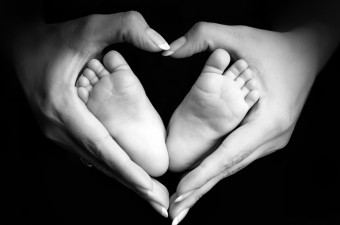This Day in History: November 15th
Today in History: November 15, 1985
 A dark-haired, blue-eyed two-week-old baby girl known to the world as “Baby Fae” (later revealed as Stephanie Fae Beauclair) underwent a first-of-its-kind heart transplant and died on this day in 1985.
A dark-haired, blue-eyed two-week-old baby girl known to the world as “Baby Fae” (later revealed as Stephanie Fae Beauclair) underwent a first-of-its-kind heart transplant and died on this day in 1985.
What made this transplant unique at this time? The tiny infant received a baboon heart in an attempt to correct hypoplastic heart syndrome, a severe birth defect which causes the left side of the heart to be much smaller than the right. Without medical intervention, Baby Fae’s death would have been a certainty.
Baby Fae was born in mid-October at a California desert hospital, and was transported to Loma Linda University Medical Center to treat her hypoplastic left heart syndrome. After discussing various options, Dr. Leonard L. Bailey, leader of the team that would eventually perform the surgery, convinced Fae’s mother that her daughter’s best chance for survival was to undergo the baboon-heart transplant, as he was himself convinced an infant was less likely to reject alien tissue than an adult would be.
The decision was front page news across the globe. The story of Baby Fae and the fight to save her life had captivated people, and letters and toys poured in for her from all four corners of the earth.
Reaction to the impending surgery was generally encouraging. In an editorial on Saturday, November 3rd, The San Diego Union stated,
The great medical team at highly respected Loma Linda University Medical Center has demonstrated medical science at its best, which is to say it was willing to dare failure and controversy to save a life that would otherwise have been lost. And even if Baby Fae does not survive, she and her doctors will have advanced medical knowledge for the ultimate benefit of mankind.
On October 26th, Fae underwent and survived the lengthy and complicated surgery. But not everybody was ready to shake the hand of Dr. Bailey. John Najarian, MD, Transplant specialist of the University of Minnesota observed, “Everything we know indicates that the heart is going to fail. The operation will merely prolong the dying process.”
There were also questions as to why Dr. Bailey made no attempt to procure a human donor, but apologists insist given the time constraints the team was working within, that feat would have been virtually impossible, so was a pointless thing to try at that stage (though it was hoped that the baboon heart would buy the child enough time to eventually get a human transplant). Still, critics questioned his motives.
Following the surgery, the hospital did everything humanly possible to ensure that Baby Fae would have her best shot at recovery. Dr. Bailey and a large team of physicians, nurses and other health care professionals monitored their tiny patient constantly. Fae’s mom visited many times during the day, and took her out of her crib to hold her, cuddle her, and sit with her in a rocking chair.
Sadly, despite the best that medical science could provide at the time and the prayers of many, little Fae passed away on November 15th at 9.00 p.m., due to her body rejecting the transplant. What went wrong? It’s thought it had to do with blood type. Baby Fae had type O blood and the xenograft was type AB. There are baboons who have type O blood, but the medical center involved didn’t have one available at the time, as only about 1 in 100 baboons have this.
In the end, Fae’s baboon heart transplant was a failure. Was it even worth it?
According to “Discover” magazine it certainly was.
In a world where many millions of children are dying for simple want of food, is it right, after all, to spend so much time, effort, and money to try to save one who has so little chance of survival? Perhaps not simply right, but necessary. To cherish the life of one child—‘this precious child,” as Leonard Bailey put it—is to value the lives of all. A rescue mission need not succeed to be brave.
If you liked this article, you might also enjoy our new popular podcast, The BrainFood Show (iTunes, Spotify, Google Play Music, Feed), as well as:
- How Blood Works and the Difference Between Blood Types
- The First Test Tube Baby
- The Woman Who Carried a Fetus in Her Body for 60 Years
| Share the Knowledge! |
|




